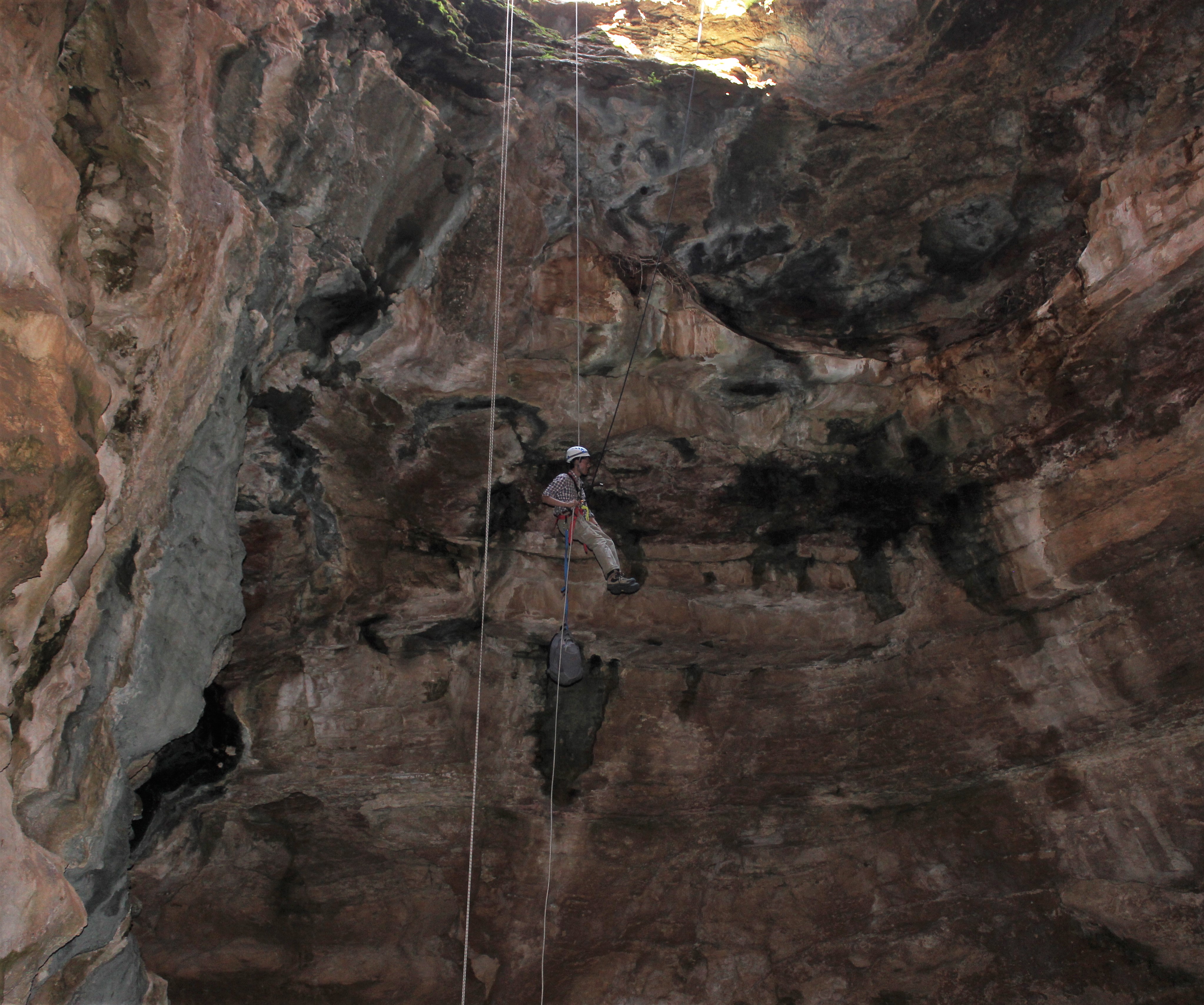Susumu Tomiya
Program-specific Assistant Professor
CICASP
Research
Research Interests:
- Evolution and extinction of mammals
- Vertebrate morphology and paleontology
- Use of paleontological data to inform biodiversity conservation
Background
Professional Background
Adjunct Lecturer
Chukyo University (Nagoya, Japan), 2020–Present
Aichi University of the Arts (Nagakute, Japan), 2019–2023
Research Associate
Field Museum of Natural History (Chicago, USA), 2017–Present
University of California Museum of Paleontology (Berkeley, USA), 2013–Present
Postdoctoral Scholar
Des Moines University (Des Moines, USA), 2017-2018
Field Museum of Natural History (Chicago, USA), 2013-2016
Editorial Board Member
Cambridge Prisms: Extinction
Educational Background
Ph.D. (Integrative Biology), University of California, Berkeley
B.A. (Earth & Planetary Sciences), Johns Hopkins University
How to Address Me
My preferred name is Susumu. My pronouns are he/him/his. My full name, which you'll find in my publications, is Susumu Tomiya. In a conversation, please address me as Susumu (or however you feel comfortable). In formal contexts, please use Dr. Tomiya.
Current Projects
Mammalian Diversity Dynamics under Forest Loss
Collaborators: Rachel Dunn (Des Moines University), Elliot Greiner (University of Michigan), Naoto Handa (Lake Biwa Museum), Patricia Holroyd (University of California Museum of Paleontology), Masaya Iijima (Royal Veterinary College/Nagoya University), Morgane Longues (Kyoto University), Wilailuck Naksri (Nakhon Ratchasima Rajabhat University), Yuichiro Nishioka (Museum of Natural and Environmental History, Shizuoka), Rachel Short (South Dakota State University), Masanaru Takai (Kyoto University), Melissa Wood (University of Chicago), Shawn Zack (University of Arizona), Zin Maung Maung Thein (University of Mandalay)
Origin and Early Evolution of Carnivora
Collaborators: Bai Bin (IVPP), Anthony Friscia (UCLA), Camille Grohé (University of Poitiers), Kazunori Miyata (Fukui Prefectural Dinosaur Museum), Ashley Poust (San Diego Natural History Museum)
Morphological Evolution of Mammalian Milk Teeth
Mammalian teeth tell us a great deal about the evolutionary histories and relationships of mammals. Most of what we know about teeth, however, pertains to adult teeth. In contrast, a lot of basic information about milk teeth (such as what they look like!) is either lacking or scattered in the literature. My colleagues and I have been systematically documenting and measuring milk-tooth forms in extinct and living carnivorans (dogs, cats, and their relatives) and primates to build a database and analyze their evolutionary patterns in comparison to those of the adult teeth. We are aiming to answer questions like:
(1) What drives the evolution of milk-tooth forms?
(2) To what degree do milk teeth and their adult counterparts evolve independently?
(3) Do milk-tooth forms preserve information about evolutionary relationships of animals that is not available from adult teeth?
We have been collecting data at various institutions with osteological collections, including EHUB/KUPRI.
Collaborators: Dana Reuter (University of Oregon); Ben Sulser (American Museum of Natural History); Roseanne Smith (KUPRI); Mao Asami (KUPRI); Yuki Kinoshita (KUPRI); Kazuha Hirata (KUPRI)
Selected Publications
McCarroll SM, Tomiya S, Dunn RH, Zack SP, Wood MC, Bai B, Turnbull WD, Flynn JJ (2025) An early to middle Uintan (Ui1b–Ui2) mammalian fauna from the upper unit of the middle Eocene Adobe Town Member, Washakie Formation (Wyoming, U.S.A.), Journal of Vertebrate Paleontology:e2570730. https://doi.org/10.1080/02724634.2025.2570730
富谷進(2023)「霊長類の進化した時代」日本霊長類学会(編)『霊長類学の百科事典』、丸善出版、pp.78–79.[ Tomiya S (2023) The era of primate evolution [in Japanese], in Primate Society of Japan (ed.), Encyclopedia of Primatology, Maruzen Press, Japan. ISBN 978-4-621-30804-2 ]
富谷進(2023)「曲鼻猿の起源と進化」日本霊長類学会(編)『霊長類学の百科事典』、丸善出版、pp.80–81.[ Tomiya S (2023) The origin and evolution of Strepsirrhini [in Japanese], in Primate Society of Japan (ed.), Encyclopedia of Primatology, Maruzen Press, Japan. ISBN 978-4-621-30804-2 ]
Poust, A.W., Barrett, P.Z., Tomiya, S. 2022. An early nimravid from California and the rise of hypercarnivorous mammals after the middle Eocene climatic optimum. Biology Letters 18(10):20220291. [link to article; authors' accepted manuscript in KURENAI reporitory]
Redman, C.M., Tomiya, S., Bitterman, K., Cain, K., and J.A. Meachen. 2021. Utilizing inquiry-driven science outreach to curate Natural Trap Cave fossils and inspire the pursuit of STEM careers. Evolution: Education and Outreach 14(13):1–10. [freely available online]
Tomiya, S., S.P. Zack, M. Spaulding, and J.J. Flynn. 2021. Carnivorous mammals from the middle Eocene Washakie Formation, Wyoming, USA, and their diversity trajectory in a post-warming world. Paleontological Society Memoir 82 (Supplement to Journal of Paleontology 95):1–115. [freely available online]
Tomiya, S., and L.K. Miller. 2021. Why aren't rabbits and hares larger? Evolution 75(4):847–860. [freely available online]
Tomiya, S., and Z.S. Morris. 2020. Reidentification of late middle Eocene "Uintacyon" from the Galisteo Formation (New Mexico, U.S.A.) as an early beardog (Mammalia, Carnivora, Amphicyonidae). Breviora 567(1):1–12. [freely available online]
Tomiya, S., and J.A. Meachen. 2018. Postcranial diversity and recent ecomorphic impoverishment of North American gray wolves. Biology Letters 14(20170613):1-6. [freely available online]
Tomiya, S., and Z.J. Tseng. 2016. Whence the beardogs?: reappraisal of Middle to Late Eocene “Miacis” from Texas, USA, and the origin of Amphicyonidae (Mammalia: Carnivora). Royal Society Open Science 3(160518):1-25. [freely available online; news articles in Christian Science Monitor, Forbes, Science, The Guardian, WTTW Chicago Tonight, and elsewhere]
Tomiya, S. 2013a. Body size and extinction risk in terrestrial mammals above the species level. American Naturalist 182:E196-E214. [freely available online]
Tomiya, S. 2013b. New carnivoraforms (Mammalia) from the middle Eocene of California, USA, and comments on the taxonomic status of ‘Miacis’ gracilis. Palaeontologia Electronica 16(2; 14A):1-29. [freely available online]
Tomiya, S. 2011. A new caniform (Carnivora: Mammalia) from the middle Eocene of North America and remarks on the phylogeny of early carnivorans. PLoS ONE 6:e24146. [freely available online]
Tomiya, S., J.L. McGuire, R.W. Dedon, S.D. Lerner, R. Setsuda, A.N. Lipps, J.F. Bailey, K.R. Hale, A.B. Shabel, and A.D. Barnosky. 2011. A report on late Quaternary vertebrate fossil assemblages from the eastern San Francisco Bay region, California. PaleoBios 30:50-71. [freely available online]
Barnosky, A.D., N. Matzke, S. Tomiya, G.O.U. Wogan, B. Swartz, T. Quental, C. Marshall, J.L. McGuire, E.L. Lindsey, K.C. Maguire, B. Mersey, and E.A. Ferrer. 2011. Has the Earth's sixth mass extinction already arrived? Nature 471:51-57. [link to abstract]
Tomiya, S., B.A. Swartz, and M. Batavia. 2011. The educational values of the University of California Museum of Paleontology. University Museums and Collections Journal 3:61-66. [freely available online]
Contributed open-access datasets
Tomiya, S., S.P. Zack, M. Spaulding, and J.J. Flynn. 2021. Data from: Carnivorous mammals from the middle Eocene Washakie Formation, Wyoming, USA, and their diversity trajectory in a post-warming world. Dryad Digital Repository.
Tomiya, S., and L.K. Miller. 2021. Data from: Why aren't rabbits and hares larger? Dryad Digital Repository.
Tomiya, S., and J.A.M. Meachen. 2018. Data from: Postcranial diversity and recent ecomorphic impoverishment of North American gray wolves. Dryad Digital Repository.
Tomiya, S., and Z.J. Tseng. 2016. Data from: Whence the beardogs? Reappraisal of the Middle to Late Eocene ‘Miacis’ from Texas, USA, and the origin of Amphicyonidae (Mammalia, Carnivora). Dryad Digital Repository.
Tomiya, S. 2013. Data from: Body size and extinction risk in terrestrial mammals above the species level. Dryad Digital Repository.
Press
2022
Diego bows to ancestral sabretoothed mammal. AAAS EurekAlert (2022/10/13).
Paleontologist announces discovery of second saber-tooth catlike species that once roamed San Diego area. San Diego Union Tribune (2022/10/21).
2021
Where’s my horse-sized rabbit? AAAS EurekAlert (2021/04/19).
Contact
Mailing address:
Center for International Collaboration and
Advanced Studies in Primatology (CICASP)
Center for the Evolutionary Origins of Human Behavior
Kyoto University
41-2 Kanrin
Inuyama, Aichi 484-8506
Japan
Gallery



